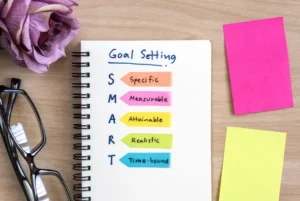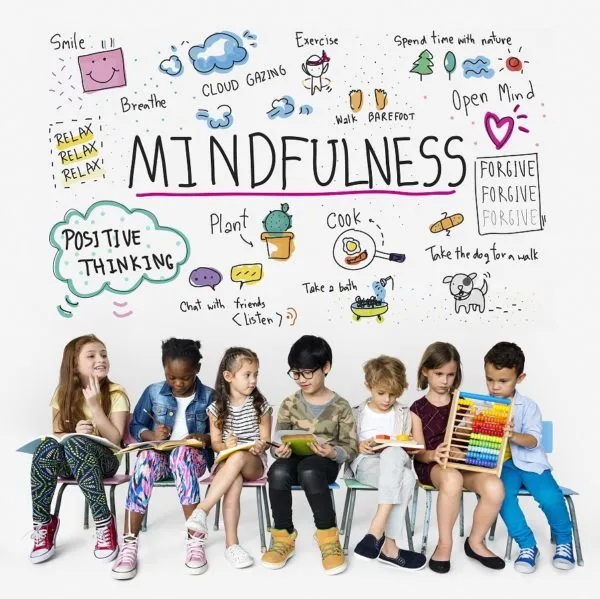Stress Unleashed: The Silent Architect of Disease in Your Body
Here are a few questions that may be harder to answer than you might expect – Do you feel like stress has become a constant companion in your life? Do you find yourself struggling to keep up with the demands of work, relationships, and personal responsibilities? Are you often plagued by physical symptoms like headaches, fatigue, or digestive issues?
If you answered yes to any of these questions, then you are not alone. In fact, stress has become a silent architect of disease in our modern society.
But what exactly is chronic stress, and why should we really be concerned about it?
Unlike acute stress, which is a normal response to immediate threats or challenges, chronic stress is a persistent state of heightened arousal that can have devastating effects on our physical and mental health. When we’re constantly bombarded with stressors, our bodies and minds don’t have a chance to recover and reset, leading to a host of negative consequences.
As a mental health platform and social giving platform, AlignUs recognizes the urgent need to address the chronic stress epidemic head-on. We believe that by understanding the science behind stress and its physiological manifestations, we can empower individuals to take control of their well-being and build resilience in the face of life’s challenges.
So, if you’re ready to break free from the grip of chronic stress and unlock a healthier, more resilient version of yourself, keep reading. Together, we’ll explore the cutting-edge science of stress management and discover practical tools for transforming your relationship with stress, one day at a time.
What Is Chronic Stress?
Stress is normal, right? In fact, if we aren’t stressed, aren’t we lazy or disconnected from life?
Oh, how we’ve lost sight of what a thriving life looks like! Acute stress, which is the body’s natural response to immediate threats or challenges, is a normal and even beneficial part of life.
When we encounter a stressor, such as a looming deadline or a confrontation with a colleague, our body releases hormones like cortisol and adrenaline, preparing us to either fight or flee. It’s ingrained in us to seek protection from dangers – be it a predator chasing us down for a meal or a dangerous storm throwing bolts of lightning down around us.
But here’s the thing – we probably don’t have lions chasing us down on the savannah. We have homes and weather apps to keep us warned of dangerous storms. In fact, we have very little to fight or flee from in our modern world.
Yet we all seem to struggle with chronic stress – a prolonged state of emotional or psychological strain, often resulting from ongoing life pressures or unresolved trauma. It’s the kind of stress that simmers below the surface, day after day, week after week, without any clear resolution or relief.
We’ve Normalized Chronic States of Stress
Chronic stress has become alarmingly prevalent – and worst, accepted as part of life!
From the pressure to succeed in our careers to the constant bombardment of digital stimuli, we face a never-ending stream of stressors that can quickly overwhelm our coping mechanisms. The result is a chronic stress epidemic that is silently eroding our physical and mental health.
According to a survey conducted by the American Psychological Association, over half of Americans report experiencing symptoms of severe and ongoing stress. This chronic stress epidemic is not only affecting individuals but also placing a significant burden on our healthcare system and society as a whole.
As a mental health platform, AlignUs recognizes the urgent need to address chronic stress and its far-reaching implications. By providing resources, tools, and a supportive community, we aim to empower individuals to take control of their stress levels and build the resilience needed to thrive in the face of life’s challenges.
But to truly understand the impact of chronic stress on our health and well-being, we must first examine how it manifests in the body.
How Chronic Stress Impacts The Body
Sure, stress can leave us in a fog – forgetting important things and feeling frazzled. But the effects of chronic stress go far beyond just mental fatigue.
When we are constantly exposed to high-stress levels, our cortisol levels remain elevated for extended periods. This can lead to various physical symptoms, such as headaches, digestive issues, muscle tension and pain, and even cardiovascular problems.
The 2023 Stress in America survey revealed some alarming trends in the physiological manifestations of chronic stress across different age cohorts:
The Impact of Chronic Stress on the Nervous System
The survey found that adults ages 18 to 34 reported the highest rate of mental health diagnoses at 50% in 2023, with anxiety disorder (24%) and depression (23%) being the most common. This age group also reported mental health as the highest stressor among all age cohorts at 72%, highlighting the significant impact of chronic stress on the nervous system.
The Effects of Chronic Stress on the Immune System
Adults ages 35 to 44 experienced the highest increase in chronic illnesses, from 48% in 2019 to 58% in 2023. This age cohort also saw a significant increase in mental health diagnoses, from 31% in 2019 to 45% in 2023. These findings suggest chronic stress can weaken the immune system, making individuals more vulnerable to various health problems.
Hormonal Imbalances Caused by Chronic Stress
The survey revealed that women were more likely than men to report feeling “consumed” by their worries about money (50% vs. 44%) and to cite family responsibilities (58% vs. 52%) and relationships (49% vs. 44%) as key stressors in their lives. These gender disparities in stress levels and sources of stress may contribute to hormonal imbalances and their associated health risks.
The Connection Between Chronic Stress and Inflammation
Although not directly addressed in the survey, the link between chronic stress and inflammation has been well-established in scientific literature. Chronic inflammation, driven by persistent stress, can contribute to the development of various diseases, such as cardiovascular disorders, autoimmune conditions, and neurological issues.
As a social giving platform focused on mental health and well-being, AlignUs understands the critical importance of addressing the physiological manifestations of chronic stress. By providing resources, tools, and a supportive community, we aim to empower individuals to manage their stress and promote overall health proactively.
Innovative Approaches To Ending Chronic Stress
As our understanding of the complex nature of chronic stress continues to grow, mental health professionals and researchers are developing innovative treatment approaches to help individuals manage and reduce stress effectively. These cutting-edge therapies and techniques focus on harnessing the power of the mind-body connection to promote healing and resilience.
Biofeedback and its Role in Managing Chronic Stress
Biofeedback is a non-invasive therapy that helps individuals gain awareness and control over their physiological responses to stress.
Biofeedback training uses specialized equipment to monitor bodily functions such as heart rate, breathing, and muscle tension. It enables individuals to learn how to consciously regulate these responses, promoting relaxation and stress reduction.
During a biofeedback session, sensors are attached to the body to measure specific physiological signals. This information is then displayed on a screen, providing real-time feedback to the individual.
With guidance from a trained practitioner, individuals learn to recognize and modify their body’s stress responses through techniques such as deep breathing, progressive muscle relaxation, and visualization.
Research has shown that biofeedback can be an effective tool in managing chronic stress and its associated symptoms. Many individuals who participated in biofeedback training experienced significant reductions in perceived stress, anxiety, and depression compared to a control group.
Neurofeedback as a Cutting-Edge Therapy for Stress Reduction
Neurofeedback, also known as EEG biofeedback, is a specialized form of biofeedback that focuses on the brain’s electrical activity. This innovative therapy uses real-time displays of brain wave patterns to help individuals learn how to modulate their brain function and improve emotional regulation.
In a neurofeedback session, electrodes are positioned on the scalp to gauge the brain’s electrical activity. A computer processes this information and presents it to the individual as visual or auditory feedback. Individuals can develop a greater sense of emotional balance and resilience by learning to control specific brain wave patterns associated with relaxation and stress reduction.
A growing body of research supports the efficacy of neurofeedback in managing chronic stress and related conditions – similar in outcomes to biofeedback treatments.
Mindfulness-Based Techniques for Stress Management
Getting practical, mindfulness-based techniques, such as meditation and yoga, have gained widespread recognition as effective tools for stress management.
These practices focus on cultivating present-moment awareness, non-judgmental observation, and self-compassion, which can help individuals better cope with stress and enhance emotional well-being.
Mindfulness meditation involves focusing one’s attention on the present moment, often by observing the breath or bodily sensations. By observing thoughts and emotions without becoming entangled, individuals can develop greater clarity, calm, and perspective.
Similarly, yoga combines physical postures, breathing exercises, and meditation to promote relaxation and stress reduction. The gentle stretching and controlled breathing involved in yoga can help release muscle tension, improve circulation, and calm the nervous system.
The Importance of Personalized Medicine in Tailoring Stress Management Strategies
While there are many evidence-based approaches to managing chronic stress, it is essential to recognize that no single treatment works for everyone. The complex interplay of genetic, environmental, and lifestyle factors contributing to an individual’s stress response highlights the need for personalized medicine to tailor stress management strategies.
Personalized medicine considers an individual’s unique biological, psychological, and social characteristics to develop targeted interventions that are most likely to be effective for them.
This approach may involve a combination of therapies, such as biofeedback, neurofeedback, mindfulness-based techniques, and lifestyle modifications, tailored to the individual’s specific needs and preferences.
By leveraging advances in genomics, neuroimaging, and data analytics, personalized medicine holds great promise for optimizing stress management interventions and improving outcomes for individuals struggling with chronic stress.
As a mental health platform and social giving platform, AlignUs recognizes the importance of offering diverse evidence-based stress management resources and tools to support individuals on their journey towards greater resilience and well-being.
Through our Health and Wellness Podcast and other initiatives, we aim to raise awareness about innovative treatment approaches and empower individuals to take an active role in their stress management journey.
Lifestyle Modifications for Stress Management
While innovative treatment approaches like biofeedback and mindfulness-based techniques can be highly effective in managing chronic stress, lifestyle modifications also promote overall well-being and resilience.
By making simple changes to your daily habits and routines, you can significantly reduce your stress levels and improve your ability to cope with life’s challenges:
Yes, Your Diet Matters
What you eat can have a profound impact on your stress levels and emotional well-being. A diet rich in whole foods, such as fruits, vegetables, whole grains, lean proteins, and healthy fats, can help nourish your body and support optimal brain function.
The Role of Exercise
Regular physical activity is one of the most effective ways to manage stress and promote emotional well-being. Exercise helps release endorphins, the body’s natural mood boosters, and can help reduce symptoms of anxiety and depression. On most days of the week, strive for a minimum of 30 minutes of physical activity – even a walk can make a big difference!
The Importance of Sleep Hygiene
Getting enough quality sleep is essential for managing stress and promoting emotional resilience. Poor sleep can exacerbate stress, impair cognitive function, and contribute to mood disorders.
To improve your sleep hygiene, try to establish a consistent sleep schedule, create a relaxing bedtime routine, and ensure your sleep environment is cool, dark, and quiet.
Building Resilience to Navigate Stressors
Building resilience is key to navigating life’s stressors more effectively and maintaining emotional well-being in the face of adversity.
Some resilience-building strategies include cultivating a positive outlook, developing strong social connections, setting realistic goals, and practicing self-care. Engaging in activities that promote personal growth, such as learning new skills or pursuing hobbies, can also help build resilience and enhance overall life satisfaction.
How AlignUs Is Changing How We Approach Chronic Stress
We believe that everyone deserves access to high-quality mental health resources and support, regardless of their background or circumstances.
That’s why we’ve created a platform that combines evidence-based stress management methods and insights with the power of social giving, allowing individuals to improve their own well-being and make a positive impact on the lives of others.
One key way that AlignUs spreads awareness about the impacts of chronic stress and empowers individuals to take control of their well-being is through our Health and Wellness Podcast.
Through our podcast, we aim to destigmatize conversations about mental health, provide practical advice and strategies for stress management, and foster a sense of connection and community among our listeners. By tuning in regularly, you’ll gain valuable insights into the science of stress and discover new tools and techniques for promoting emotional resilience.
Join our vibrant and supportive community of individuals committed to improving their own well-being and making a positive difference in the world. Together, we can help one another put an end to the harmful effects of chronic stress and embrace a more mindful, balanced way of living!
































